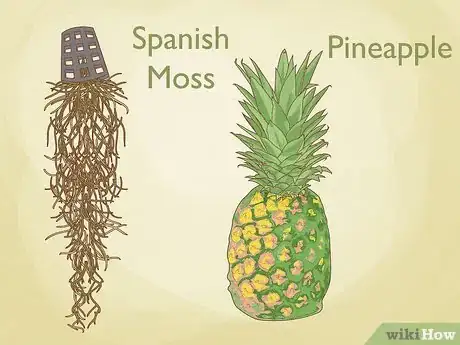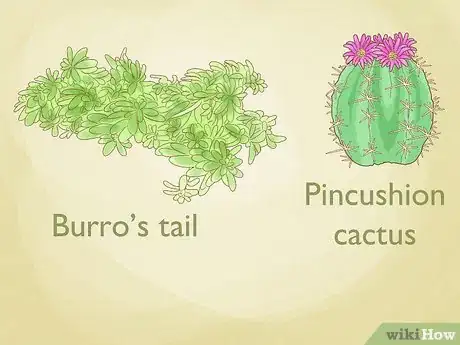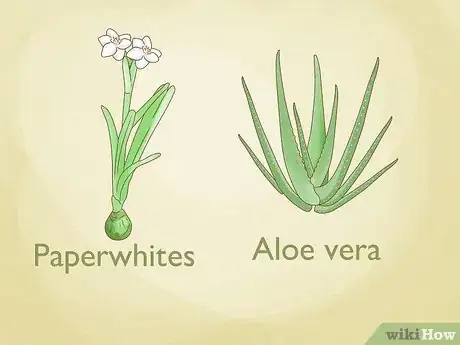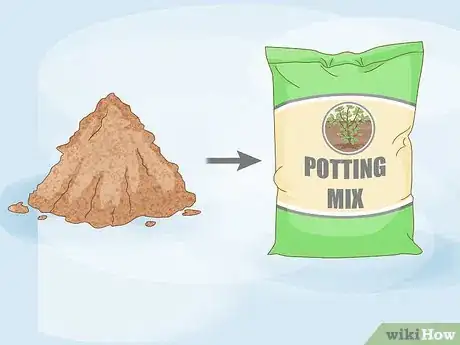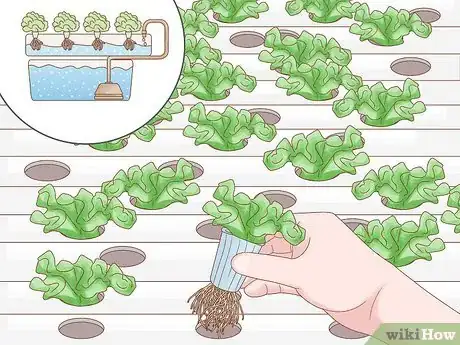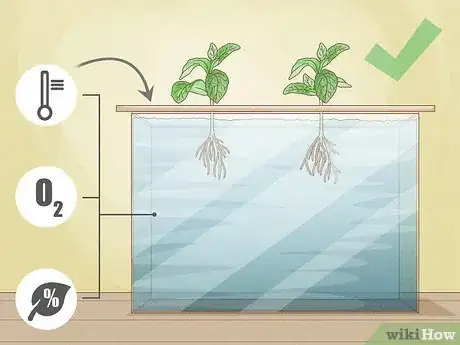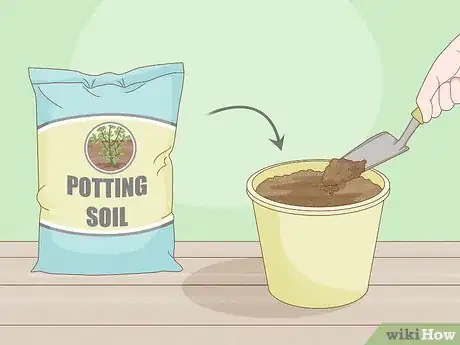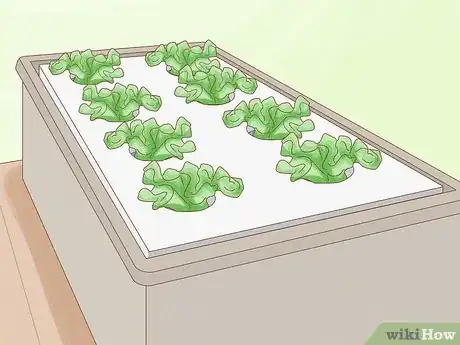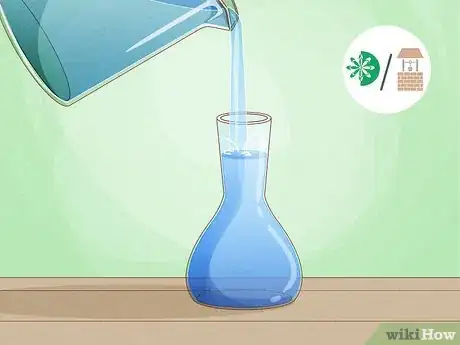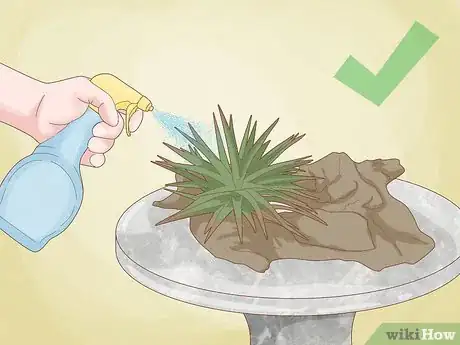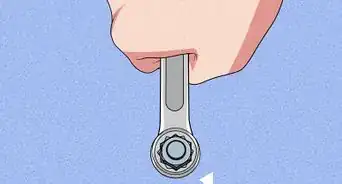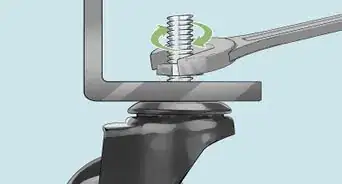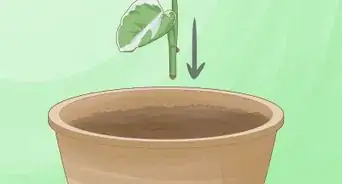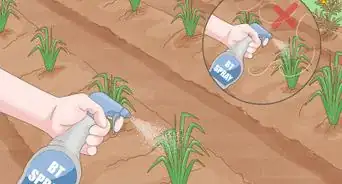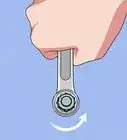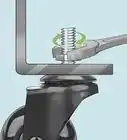This article was co-authored by wikiHow Staff. Our trained team of editors and researchers validate articles for accuracy and comprehensiveness. wikiHow's Content Management Team carefully monitors the work from our editorial staff to ensure that each article is backed by trusted research and meets our high quality standards.
There are 11 references cited in this article, which can be found at the bottom of the page.
This article has been viewed 21,664 times.
Learn more...
Gardening can be really rewarding and a lot of fun, but if you’re using soil, it can also be messy. But did you know that you can actually grow a variety of plants without any soil at all? It’s also really easy to do. As long as your plants have the water and nutrients they need, you can grow a plant in almost anything! To help you figure out how you want to grow a plant without soil, we’ve answered a few of the most common questions that people have about how they can do it.
Steps
What kind of plants can grow without soil?
-
1Air plants don’t need any soil to grow. Air plants, also known as tillandsia, are super interesting plants that don’t have a traditional root system and don’t need any soil at all. There are over 600 species of air plants and they all absorb water and nutrients through their leaves. You simply spray the plants with water once or twice a week to keep them happy. If you’re looking for a plant that’s easy to maintain and won’t create a mess, go with an air plant![1]
- The air plant family includes a wide variety of plants such as Spanish moss and even pineapples!
-
2Many succulents don’t need any soil at all. There are around 60 different plant families that contain succulents, which are plants with thickened flesh that originate from dry, desert regions.[2] Many succulents thrive in sandy or rocky growing mediums and come in a variety of shapes and colors. All you need to do is water them once a week and they’ll thrive.[3]
- A few popular succulents include echeveria, pincushion cactus, burro’s tail, and zebra plant.
Advertisement -
3Some houseplants thrive without any soil. Classic houseplants such as philodendron, lucky bamboo, and orchids can be grown in pots or containers with just a little bit of a growing medium and water at the bottom. The growing medium, which can be made out of material such as sand or fine gravel, supports and holds the roots and the water provides the nutrients the plant needs to grow. No soil necessary![4]
- Other houseplants that don’t need any soil include paperwhites, hyacinth, and aloe vera.
- Check out the houseplant section of your local nursery, garden supply store, or home improvement store. You can even order them online and have them delivered to your home.
What can I use instead of soil?
-
1Use potting mix as a soil substitute. Potting mix, sometimes called potting soil, is a blend of material designed to anchor a plant’s roots, provide support for the plant to grow, and supply nutrients as the plant grows. They actually don’t contain any soil at all. Instead, they’re usually a mixture of dry peat moss, shredded bark, sand, compost, and other materials. If you’re looking for a soil alternative, potting mix will do the trick.[5]
- Potting mix is a generic term that can include a wide variety of materials that are used to make them. Plants like succulents prefer dryer potting mixes such as sand and rocks, while peat moss and shredded park retain more moisture for plants that can easily dry out.
- You can also make your own potting mix! For a basic recipe, mix together 1 part peat moss, 2 parts compost, 1 part vermiculite, and 1 part perlite or sand in a large bucket.
-
2Try hydroponics and use a growing medium. Hydroponics involves growing plants by supplying nutrients to the roots with water. It doesn’t use any soil, but it does require a “growing medium” that can support the plant and allow the water to provide nutrients to the roots. There are a variety of growing mediums you can use including sand, fine gravel, perlite, fabric, wallpaper paste, and even gelatin![6]
- Using hydroponics is also an easy way to grow plants indoors.
How do you grow a soilless plant?
-
1Use potting soil just as you would regular soil. Potting soil, a.k.a. potting mix, is a blend of materials that essentially serve the same purpose as regular soil. It’s also similar in appearance and can be treated just as you would normal soil. Fill a container with the potting mix, add your plant or seeds, and water it. Allow your plant to establish roots and grow and add water whenever it needs it.[8]
-
2Use a hydroponic garden that doesn't need soil. Build your own hydroponic garden by creating a flood table that will hold the water for your garden, and using a sheet of styrofoam with 2 to 3 inch (5 to 7 cm) wide holes cut out of it to serve as a floating platform that sits on the water. Then, you can add your plants to small pots filled with a potting mix that fit inside of the openings. Add nutrients to the water, use drip emitters to help drain the water from the table, and a pump to keep the water circulating so it’s not stagnant.[9]
- Hydroponics is a method of growing plants in a nutrient-rich solution—no soil is involved.
How do you plant a plant in a bottle without soil?
-
1Choose a vessel with a thinner neck and fill it with spring or well water. Use a vase, jar, or any other type of container, but make sure it’s got a neck thin enough to hold your plant upright without it falling over. Fill the container with bottled spring or well water, which will contain nutrients and minerals that your plant will need to establish roots and survive.[10]
- Don’t use purified or distilled water, which won’t provide your plant any nutrients.
-
2Place a plant cutting in the water and add more water when it gets low. There are a ton of plants that grow well in a container with just water, including mint, basil, lavender, peace lily, and begonia. Take a small cutting by cutting off a section just below the leaf, which will allow the cutting to grow new roots. Place the cutting in your container of water and let it do its thing! Whenever the water in the container gets low, simply top it off with fresh bottled spring or well water.[11]
- Other plants that are great to grow in containers of water include oregano, rosemary, sage, English ivy, philodendron, coleus, geranium, and jade.
References
- ↑ https://www.newyorker.com/video/watch/obsessions-how-does-a-plant-grow-without-soil
- ↑ https://www.housebeautiful.com/lifestyle/gardening/g3441/interesting-facts-about-succulents/
- ↑ https://www.housebeautiful.com/lifestyle/gardening/a23582144/easy-houseplants-minimal-water/
- ↑ https://www.bobvila.com/slideshow/8-plants-you-can-grow-without-soil-52098
- ↑ https://www.bhg.com/gardening/houseplants/care/soil-care-soil-substitutes/
- ↑ http://www.scienceprojectideas.co.uk/growing-plants-without-soil.html
- ↑ https://aces.nmsu.edu/ces/yard/2002/121402.html
- ↑ https://www.finegardening.com/article/choosing-the-right-soilless-mix
- ↑ https://edis.ifas.ufl.edu/hs184
- ↑ https://www.apartmenttherapy.com/hydroponic-gardening-how-to-easily-grow-plants-in-water-236892
- ↑ https://www.apartmenttherapy.com/hydroponic-gardening-how-to-easily-grow-plants-in-water-236892
- ↑ https://www.housebeautiful.com/lifestyle/gardening/a23582144/easy-houseplants-minimal-water/
- ↑ https://www.epicgardening.com/best-rooting-hormones/
